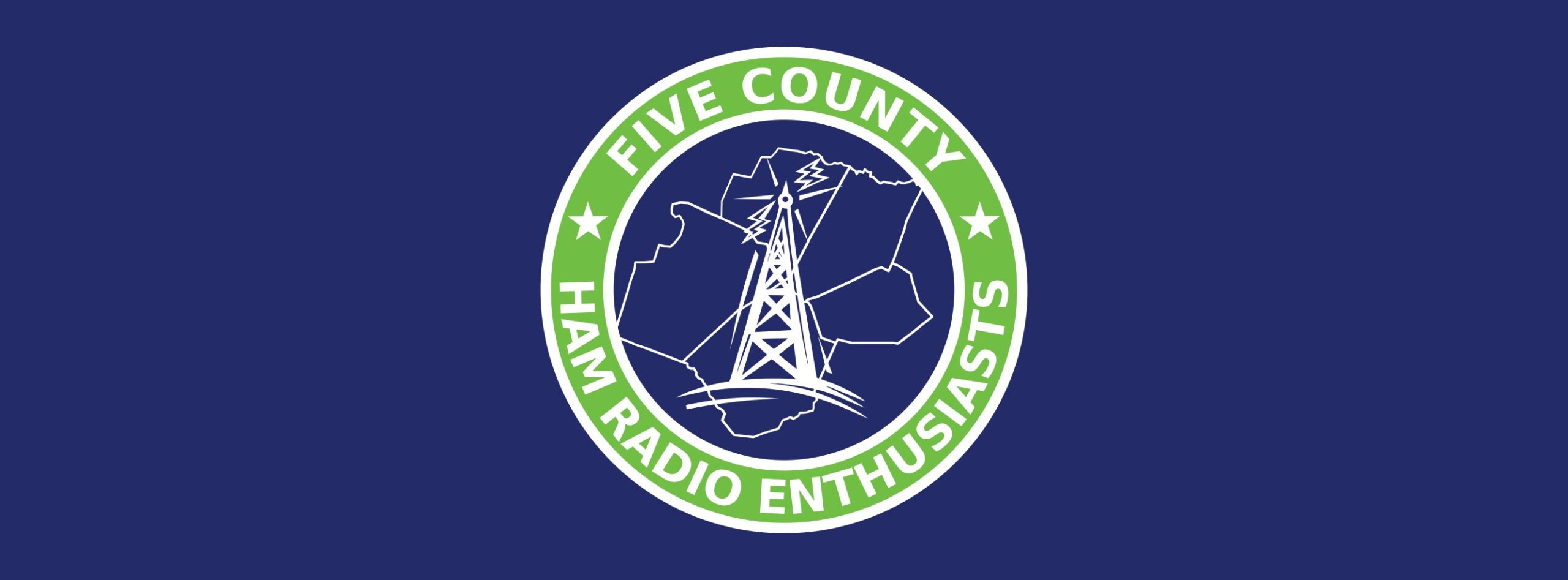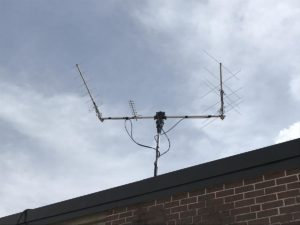By: Richard Hall (K7RLH)
Dipole antennas are a relatively inexpensive first antenna for HF operation and there are countless books that offer the numerous variations of the dipole that have used by other amateurs over the years. Of course, space requirements/limitations may define what you are able to construct/install at your QTH. The off-center-fed dipole (OCFD) is a very popular and easily constructed antenna for HF operation over a wide range of frequencies.
An article in the September 2019 QST described a variation on the classic OCF dipole antenna for 80-10 meters. If you are an ARRL member, you can access the article on page 30 of the archived edition via their web site. If not a member (I encourage you to become one), then I will try to paraphrase the construction details without all the charts and to describe its function as simply as I can.
Per almost any antenna design treatise, the required length of wire is determined by a formula similar to this: (492 x .95)/3.5 = approx. 136 ft, 2.5 in in total length. The author of the article, Brian Machesney, K1LI/J75Y, has several charts and representations of trials that he went through to determine that a feed point of approx. 45% of length is the appropriate OCF location rather than the classic 1/3-2/3 that most antenna books use for this type of antenna.
Of course, when preparing any wire antenna it’s usually best to make it a little long so that you can adjust for better ‘raw’ tuning before letting most HF rigs use an internal (or external) tuner to finely adjust for best performance. The OCFD antenna will basically have a 200 ohm feed-point impedance that must be reduced using a 4:1 current balun to provide a 50 ohm feed to the transmitter. Thus, the balun is inserted at the 45% length point with the outward ends terminating at an insulator before being tied off in whatever shape you can achieve. Ideally, you would like to have the feed-point be about 30 feet in the air and then, for best RF protection, slope down on both ends to about 10 ft above grade. This is not too critical and is solely dependent upon your environmental constraints.
Now, before you permanently affix the insulators, it is best to do some preliminary SWR analysis of the antenna on the bands to arrive at the final antenna length for your situation, i.e., height above ground, soil conductivity conditions, trees, etc. Once you begin analyzing the antenna, you may find that you need to shorten the wire length to bring your SWR within your rig’s antenna parameters for most of portion of the band you plan to operate in. A look at the ARRL band plan for specific modes of operation, within your license class, will help you rough out the required wire length. Before you cut the wire, fold it back onto itself thru the insulator and continue testing until you have reached a suitable SWR reading describe above.
Once you have achieved the desired SWR readings, it is usually desirable to solder the wire near the insulator or otherwise permanently anchor to resist coming apart in high winds, etc. You may find that, by using readily available paracord type material to tie off the insulator, your antenna flexes sufficiently to avoid needing any other form of strain relief.
Components required are: 150 feet of 18-10 AWG stranded wire, 4:1 balun (constructed per the article, or other sources, or purchased), two ceramic or plastic insulators and 100 feet of suitable paracord type rope material, and 50 or more feet of your preferred coax (with PL-259s on each end) to feed the transmitter. The wire and paracord can usually be found at your favorite home improvement store, wood can also be used for the insulators, so you may only need to purchase the balun from other than local sources.
I have one of these antennas on my property and I also have an Eagle One vertical that covers the same frequency ranges. In my opinion, depending upon your specific environmental conditions, you will find them very similar in ‘noise’ level and performance. I have also compared these two against a Wolf River Coil vertical with similar results.
Obviously, sometimes a vertical is better than a horizontal and vice versa. Last year at Field Day was a perfect example; we swapped back and forth depending upon responding to stations that heard our calls and whether or not we were too close/far for one type of antenna to provide the best signal back to them.
This is a hobby and experimentation has always been a key element of enjoying one’s amateur radio privileges. So, just like any other hobby, doing something for yourself is very gratifying rather than purchasing everything ready-made. Have fun, save yourself some money, and use the knowledge you acquired along your path to amateur licensing to enjoy whatever facet of ham radio that ‘lights your fire.’


